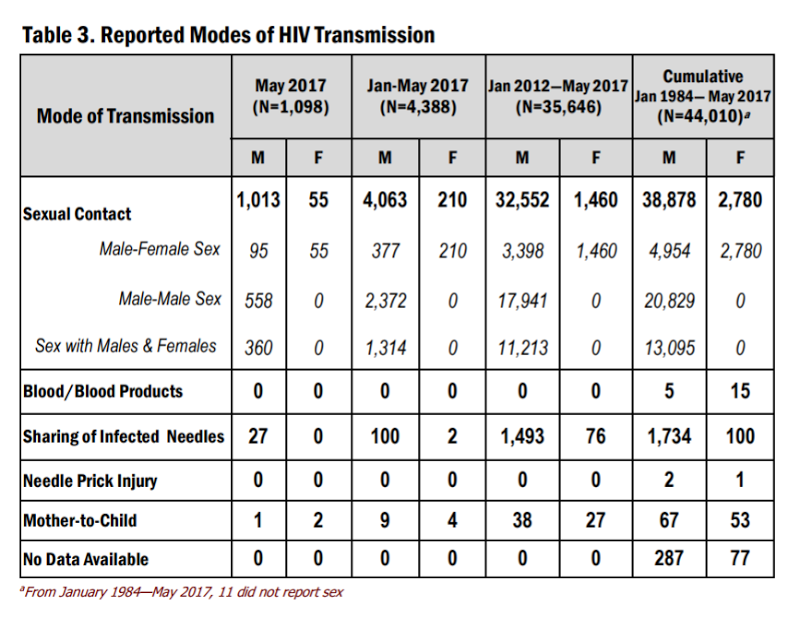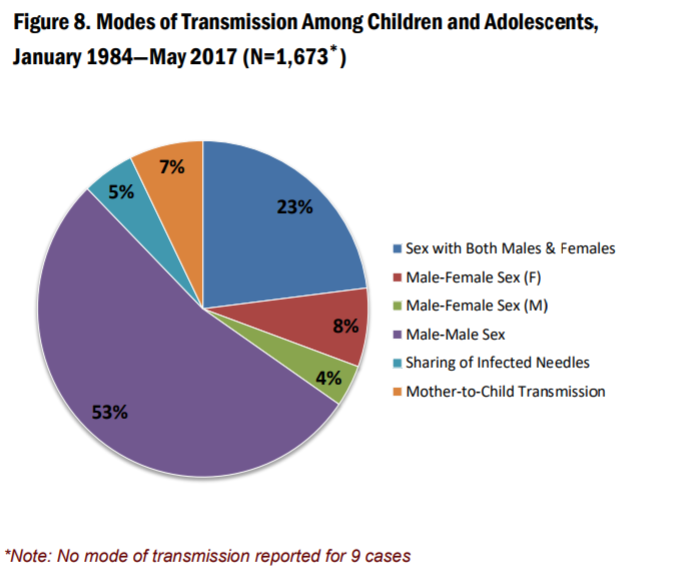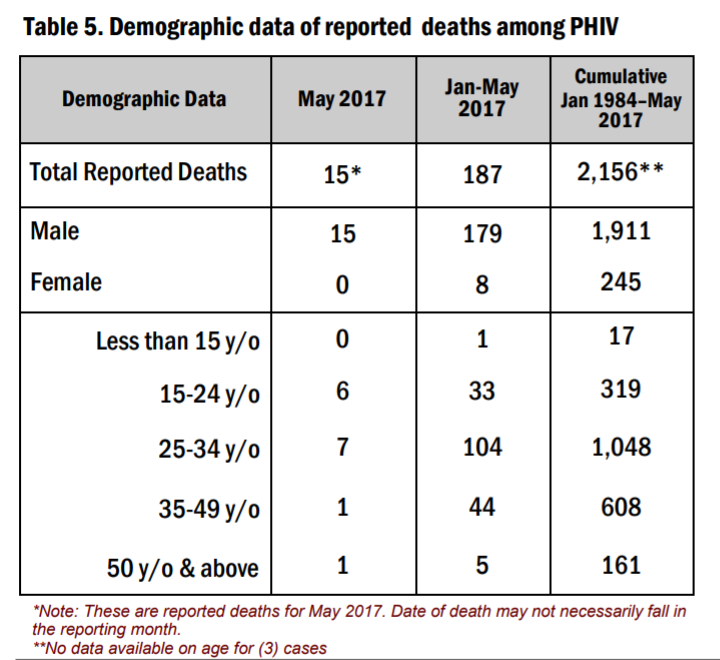PHL has 'fastest growing' HIV epidemic in Asia-Pacific
The Philippines has experienced a 140 percent increase in new HIV infections from 2010 to 2016, registering the highest number of infections in Asia despite having low numbers overall, the Department of Health (DOH) said in a briefing on Tuesday.
DOH Public Health Surveillance chief Dr. Genesis Samonte said data from the United Nations Programme on HIV/AIDS (UNAIDS) showed that the number of new HIV infections in the Philippines increased by 140% or 4,300 in 2010 to an estimated 10,500 in 2016.
“If we don't halt this trajectory, we will be having about 19,300 cases for one year by 2022,” Samonte said.
Health Secretary Paulyn Ubial added that “the Philippines has become the country with the fastest growing HIV epidemic in Asia and the Pacific, and has become one of 8 countries that account for more than 85% of new HIV infections in the region.”
Fifty-six thousand people living with HIVs (PLHIV) have been detected by the HIV/AIDS & ART Registry of the Philippines' (HARP) as of 2016; of these, 71 percent or 39,622 have been diagnosed, but only 32 percent or 17,940 are on anti-retroviral treatment (ART) that can allow them to have normal lifespans.
Eighty percent of new infections only came from 117 "high-burden areas”: the National Capital Region, Rizal, Cavite, Laguna, Batangas, Bulacan, Cebu, Davao, Tagum, Cagayan de Oro, Iligan, Zamboanga, General Santos City, Koronadal, Butuan, Iloilo, Bacolod, Puerto Princesa, Tacloban, Naga, Lucena, Angeles, Mabalacat, Tarlac, San Fernando, Cabanatuan, Olongapo, and Baguio.
MSMs, pregnant women, children born with HIVs
Males who have sex with males (MSM) and transgender women who have sex with males (TGW) accounted for 83 percent of the cases, mostly aged 15 to 24.
Samonte noted that MSM do not necessarily identify as gay.
“We’re not talking about those that are openly gay… What we’re saying is any male who has sex with another male for whatever reason, is at risk for getting HIV based on our data,” he said.
There is a special focus on helping MSM as sexual contact between males is the most reported mode of HIV transmission in the country, as seen in HIV/AIDS & ART Registry of the Philippines' (HARP) quarterly report on HIV where it states that 20,829 out of 44,010 cases from 1984 until May 2017 came from male-male sexual contact.

In 2014, the United NationsProgramme on HIV/AIDS (UNAIDS) released a study which stated that gay and other men who have sex with men “often aquire HIV while quite young”, an observation consistent with HARP's data.
While condom usage increased, Samonte noted that “on the average”, the first sexual encounter happens at 16 while MSMs begin at 13 to 14. The first instance of anal sex among MSMs happen at 17 but “first condom use happens two years after they actually started having sex” and the first HIV test happens at 22, “which is about six years after the first.”

“And as you all know, HIV is an infection that can cause death within 10 years,” Samonte said.

Furthermore, UNAIDS said “prevailing stigma, discrimination, and punitive social and legal environments based on sexual orientation and gender identity” and “limited availability of and access to sexual and reproductive health services for young people” heightens the vulnerability of MSM regardless of sexual orientation to HIV.
“HIV testing is not the end goal. HIV testing is only a bridge to life-saving treatment,” said Samonte. “The issue is that so many people are getting tested but don’t get treatment.”
More stringent tests will also benefit pregnant women with HIV and help with the DOH's goal of lowering births of children with HIV.
“Females also can get HIV and females do get pregnant. And as you can see, half of our pregnant females are on ART,” Samonte said.
Prevention is key
Samonte said prevention is the key to lowering the human and financial costs of HIV, as prevention through checkups, counseling, and especially the use of condoms cost P3,200 a year compared to the lifelong yearly burden of P33,000 for treatment.
86,000 more HIV cases may emerge by 2022; health officials say greater protection (P3,200/year) needed as treatment (P33,000/yr) costs more pic.twitter.com/9a5PgAqoxg
— Rie Takumi (@rie_takumi) August 1, 2017
Current programs already made a positive change in the projected number of cases from 2017 to 2022; instead of increasing by 177 percent, the possible number of new cases in this period decreased to 84%.
There would have been a 177% increase in HIV from 2017-2022 if effort wasn't made to lower cases; percentage decreased to 84%. pic.twitter.com/pp4XxbhsrE
— Rie Takumi (@rie_takumi) August 1, 2017
Protocols have also changed to allow people with two positive tests to receive treatment regardless of their CV4 count, allowing for easier access to ART.
“Ngayon, ang protocol is dalawang positive test, pwede nang i-treat. Within the day, pwede nang malaman ang status and treatment can start,” Ubial said. “Dati kasi may CV4 count pa, below 200 ang treatment. Ngayon, anybody who is positive is treated regardless of CV4 count. We started this year.”
The 6th AIDS Medium Term Plan was launched in December 2016 to set goals for the country in lowering the number of HIV cases in the country.
6th AIDS Medium Term Plan launched in Dec. 2016; aims to increase knowledge of HIV transmission & services/prevention among 15-24 yo... pic.twitter.com/emOG1UQhNR
— Rie Takumi (@rie_takumi) August 1, 2017
Among its goals include the increase in knowledge of HIV transmission and access to treatment among 15- to 24-years-old to 90 percent; prevent new HIV infections especially among this age range; test and treat 90 percent of PLHIV; and eliminate mother-to-child transmission of HIV. —JST, GMA News



